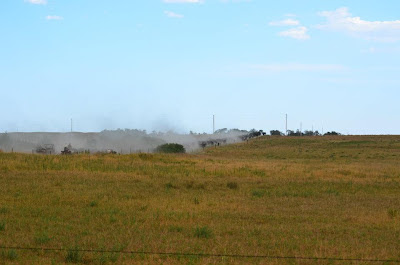 |
| If you don't have a horse a pick up works too! |
 |
| You can see the burned area in the far background as this herd is moved away from the fire line. |
 |
| You can see how dry the road is as the cattle kick up lots of dust. |
 |
| Not only has the grass the cattle graze been burned so has many stacks of hay that was stored to feed the cattle when the snow covers the ground this winter. |
 |
| Big thanks to the Orphan Grain Train for their support |
 |
| If you are looking for a place to donate, The American Red Cross is a great place to start!!!! |































